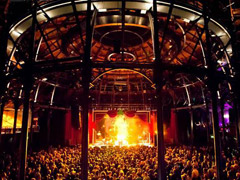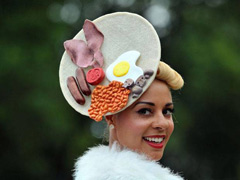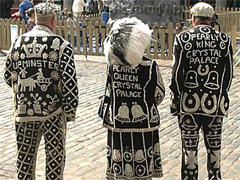


From train repair shed and squat house to becoming one of London’s best loved venues, we take a look at the history of the Roundhouse in Camden.
It’s a week night, but Chalk Farm Road is packed with men in their 40s, most of whom are inebriated and lairy. The throng of people extends past the Roundhouse and up the road past Domino’s Pizza towards Primrose Hill. Have they started screening football matches now too? But no, it’s just the aftermath of a Happy Mondays reunion gig.
The Roundhouse boasts one of the most eclectic programmes of any venue in the capital, as they’re known to host events as diverse as chart-topping pop bands at the iTunes festival, DJs from Berlin techno label Innervisions playing a reinvented soundtrack to German silent movie the Cabinet of Dr Caligari, a kids’ play by the creators of Gruffalo, and gigs by old-timers like Paul Weller and Blondie.
The Roundhouse was built in 1846, initially known as the Luggage Engine House; its original purpose was to be a warehouse where steam trains were stationed for repairs. Its circular, conical-shaped roof was the first of its kind; the interior was even depicted in Charles Dickens’ Dombey & Son, his novel set against the backdrop of Camden’s industrial revolution.
Throughout the first half of the 19th century Camden had changed dramatically. Before the 1800s the area was semi-rural, with some parts deemed no-go areas as they were frequented by highwaymen. By the 1820s it was among London’s noisiest and most polluted neighbourhoods. New railway lines were linking up the south of England to the north, facilitating commerce, and north London was a convenient pit stop. Workers’ cottages sprouted up to accommodate labourers, and the population swelled in a very short space of time.
\n\nWithin ten years advances in engineering meant that the trains had grown in size to the point where the humble Engine House wasn’t big enough for them. It was then put to use as a corn and potato distribution centre, before Gilbey’s, the distillery and wine importers, turned it into a storage unit for gin. Gilbey’s itself was expanding rapidly, and their warehouses seemed to be popping up all over Camden, in fact they operated from over 20 acres of land in the area. Gilbey’s remained at the former Engine House for nearly 60 years, until 1963.
Playwright Arnold Wesker was the first to see its potential as an arts centre. When he took over the reins he re-named it Centre 42, after the trade union movement Article 42, which stated that arts should be accessible to all. As director of Centre 42 throughout the Swinging Sixties, he oversaw extraordinary psychedelic live shows by the Doors (who played their only indoor UK concert here), Jimi Hendrix and Pink Floyd. The controversial Oh Calcutta!, Kenneth Tynan’s play about sex, was also staged here.
In 1970 Wesker stepped down, and after several changes of hands the GLC and Camden Council eventually bought the freehold. Then the arts budget was cut in the 80s, and the building fell into disuse.
By the early 90s squatters had moved in, but were evicted in 1992 when a private property developer stepped up; they had their work cut out as the centre was in such a state of disrepair it was placed on a list of “buildings at risk”. A proposal to house the collections of the Royal Institute of British Architects here failed, no one seemed to know what to do with this 160-foot mammoth construction.
\n\nIn 1996 it was purchased by Sir Torquil Norman CBE, a local resident and former banker, who set up the Roundhouse Trust. His aim was to introduce a programme of performing arts as well as a training centre for young people. The latter was a particularly important area for Norman, as much of his personal wealth had been amassed during his time working as a toy manufacturer, most famously creating the Polly Pocket dolls. It also helped that the Roundhouse had celebrity backers, including Suggs from Madness and Bob Geldof. Norman wanted to appeal to all ages and tastes; both the Royal Shakespeare Company and musicals like Stomp made appearances here in subsequent years. He is president of the organisation to this day.
In 2004 the Roundhouse closed again, but this time for a two-year multi-million refurb. As well as restoring some of the original Victorian features, the architects were tasked with adding state-of-the-art soundproofing to the roof. A basement space with editing suites, recording studios and rehearsal spaces for 11-25 year olds was also developed, and a whole new wing was constructed for the box office and the foyer. It re-opened with Fuerzabruta, a show that’s part dance part circus act, that was so successful it has since returned to the venue.
Made in Camden, the in-house restaurant, is worth a visit in its own right, with a refined British menu and good value set lunches. The rooftop bar opens in the summer, when it transforms into a makeshift beach with a barbecue and deckchairs.
Contrary to many venues, it’s not so much the artists who’ve performed here who’ve made the Roundhouse legendary, it’s the building itself. Grade II listed, and heralded as an unconventional, yet brilliant example of 19th century architecture, it will remain a London icon for many years to come.
See also our articles on Camden Town and its miscreants, and the history of Camden’s castle pubs.


